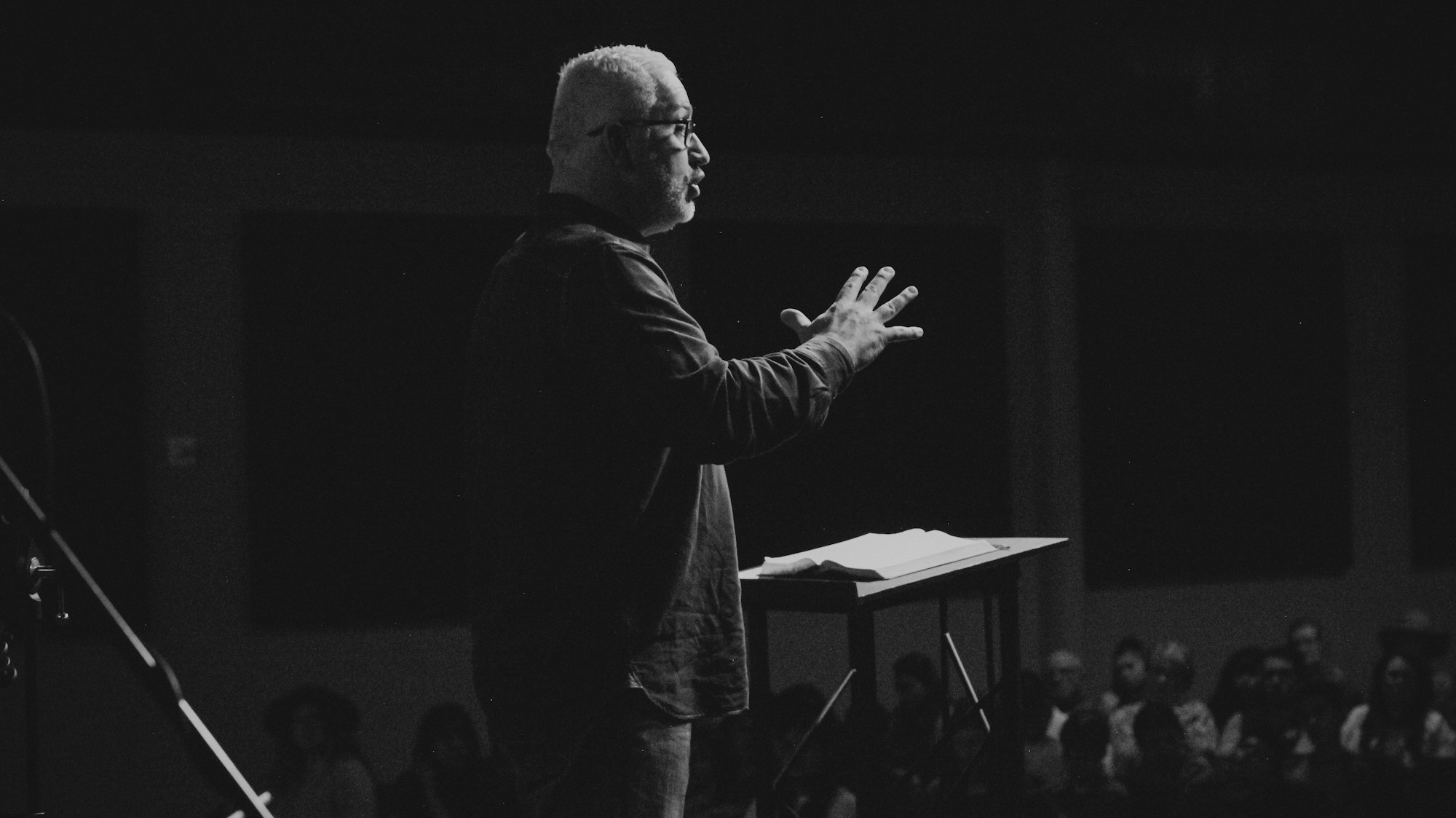Welcome to the sixth issue of Wayfinder.
Wayfinder is about learning to navigate life’s toughest decisions. The choices that keep you awake at night. The decisions that have you second-guessing yourself. The moments when the stakes are high and the path isn’t clear.
Wayfinder is designed to guide you through the fog of indecision, and make choices that align with your values, ambitions, and lifestyle. And we’ll do this using a powerful tool — decision algorithms.
Ancient Polynesian wayfinders traversed the Pacific, discovering island after island by learning to read patterns in sea swells, bird movements, and star constellations. Likewise, I propose we throw away rules, maps, and abstractions. Instead we'll build mental models to help navigate life's challenges.
Sandra's Dilemma:
Today, we have a question from Sandra, who has been a translator for two decades and is currently transitioning into the tech industry.
After spending ten months studying full-stack development and data analytics, she finds herself at a crossroads, needing to choose a specific career path in tech.
What we'll cover:
- Backcasting Your Future Self: Envision your ideal future self to identify key skills and traits that you need to develop. Think about opportunities to bridge the gap between your current skills and those you'll need.
- Understanding Tours of Duty: Classify your career stages as Rotational, Transformational, or Foundational tours, which helps in identifying the right career path for you. Understand the purposes and durations of each tour to strategize your career planning.
- Planning Your Deployments: Analyze whether you'd prefer to find match-fit or build competence that can quickly compound in your career. This will help in precisely measuring the alignment of different opportunities to your needs.
- Identifying Waypoints and Feedback Loops: Make feedback your friend by thinking about signs and feedback that will guide you if you're heading in the right direction or not. Use signposts to align or realign your experience with your long-term goals.
- Using a Life Wheel for Regular Check-Ins: Apply a life wheel framework for regular assessments of all areas of your life, helping you to develop clear action plans for continuous improvement.
Sandra's Shift
"I am currently transitioning into the tech industry after spending two decades as a translator. Over the last 10 months, I've been diligently studying full-stack development and data analytics through bootcamps and online courses.
I need to choose a specific tech career path that suits me. How can I gain clarity in determining the right professional destination for my tech journey?"
Great question Sandra.
Sounds like you've got a selection problem on your hands - what specific roles should you be targeting now that you're set on this industry shift?
The great news is it seems like you've already spent some considerable time investing ahead in some of the skills you think you'll need.
Hopefully, we'll cover useful models that help you double down on that.
This question was very similar to a lot of the ones I see from people taking my course Career Hyperdrive, so I've pulled some of the lessons and exercises directly from it.
If you want more in this vein, pick up this ebook.
Let's dive in.
Quick note
Have a problem you'd like us to tackle? Send it here, and you could be featured in an upcoming issue of wayfinder.
Step 1: Defining the Decision
➡️ First Principles Thinking: Breaking down complex problems into basic elements and reassembling them from the ground up. Sandra can use this model to discern the fundamental elements of her decision, separating her emotions and biases from the equation. It will help her get to the root of her dilemma: what does she genuinely want for her future?
Here's the question I usually like to ask:
What is the ideal end-state I am ultimately trying to achieve?
The answer may seem obvious - you want to settle into your new career and find yourself on a positive trajectory with solid progression prospects and strong compensation, etc. - but I think we can push a little further by using an exercise I usually walk through in 1:1 sessions.
Let's try Backcasting...
The road to your future self
Before we kick off, start by making a list of your current skills - I'm sure you've built a ton in two decades as an interpreter, and even more in the past year preparing for this career transition.
Have you ever watched Freaky Friday, or The Change Up?
An overworked mother and her daughter switch bodies for one freaky Friday.
In both films, the protagonists wake up one day in someone else's body and have to deal with all the chaos that ensues.
Imagine waking up one day in a different body. But it's not someone else's body, it's yours. A future version of you. And not just any version. The Beyonce (or Taylor Swift for those inclined) version of you. A version of you that's fully fulfilled and killing it in every way.
It's 5-10 years from now, and you're in the middle of an amazing career.
Run through the full simulation in your head. How does it feel when you wake up? What's around you? What does your morning look like? How do you go about your day? How do you schedule your week?
For now, don't think about any specific job titles, but think about the kind of things that version of you would do:
- Are they working alone, with a small team, or as part of a large corporation?
- Is their work creative or purely functional/technical?
- What kind of problems do they solve?
Now take a step back.
Think about what skills that future version of you would be deploying regularly. Make a list. Think widely, cover everything.
What makes them so great at what they do? What are they known for? What are their underrated skills?
Take another step back. You're back in the present, but you still remember viscerally how it felt to be in that other person's shoes.
Think about opportunities on the horizon you could exploit to develop those skills.
How can you bridge the gap between the skills you've started building and the ones you're going to need?
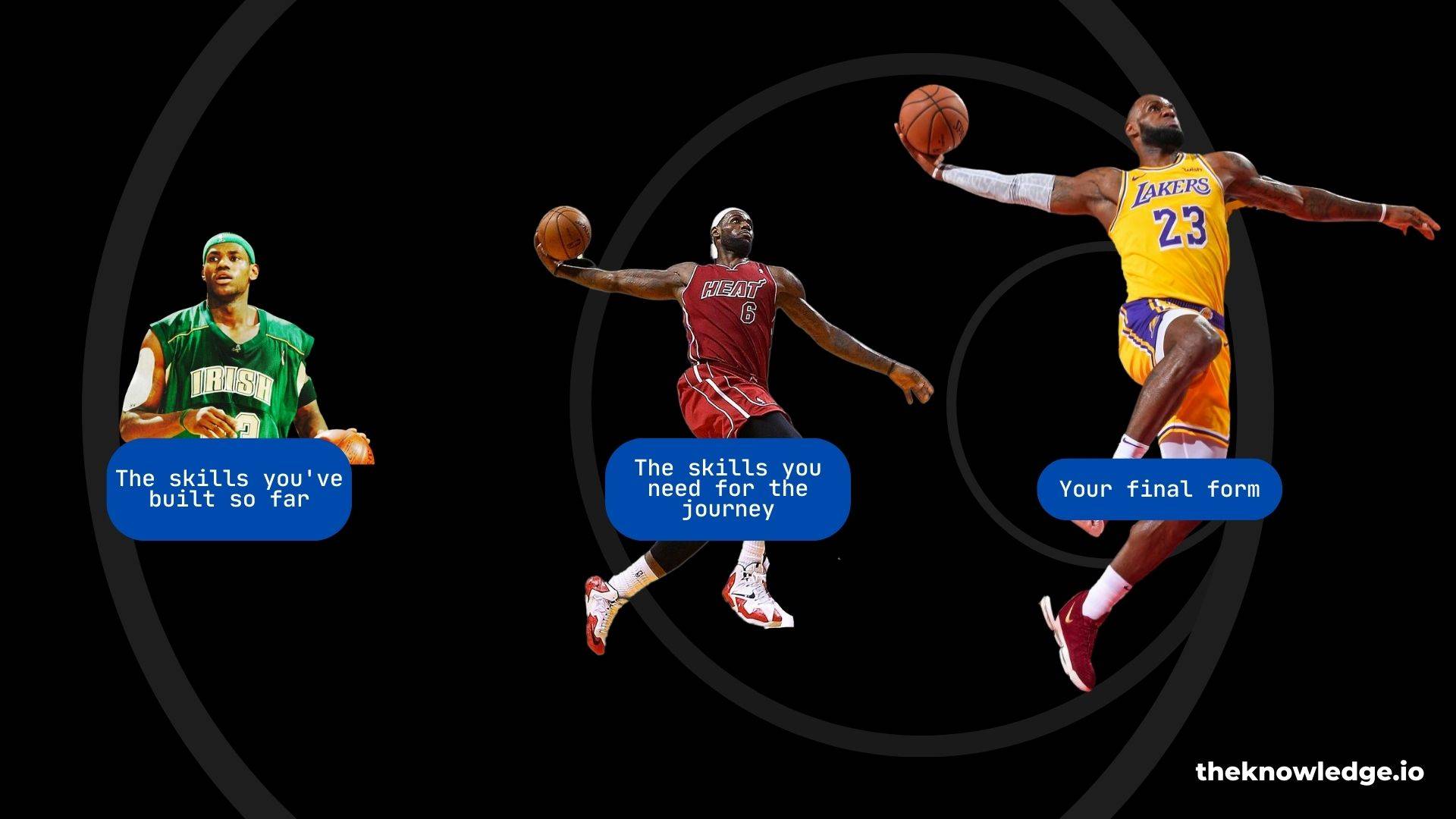
Hopefully through this process of 'backcasting' you've uncovered a much broader range of key skills than you might have considered only looking forward towards your next role.
Now that you have an idea of the additional skills you'll need to be top-quartile at, can you already see a clearer picture of what kind of roles may be well aligned for developing that skillset?
Don't worry if not - we're about to take a closer look.
Step 2: Options and Implications
➡️ One-Way vs Two-Way Doors: It's crucial for Sandra to identify if her decisions are reversible or not. If she takes on this new role and it doesn't align with her long-term goals, can she pivot? Understanding the nature of her choices will help her navigate them with confidence.
Here's the next question to consider:
What is the potential for reversibility or adaptability in my choice?
I think this is the question you jumped to intuitively Sandra. How can you make a decision with the highest alignment to your current value/incentive stack, that gives you the most stable footing moving forwards?
I think this might be a good point to introduce the Tours of Duty framework for career roles.
We can use it to figure out what type of job your next role should be, and how we can optimise for its attributes.
Tours of Duty
You'll have at least 3 or 4 tours of duty within your working life.
Your tours of duty may not all be in the same company or industry. But ideally, each will compound the skills you're developing.
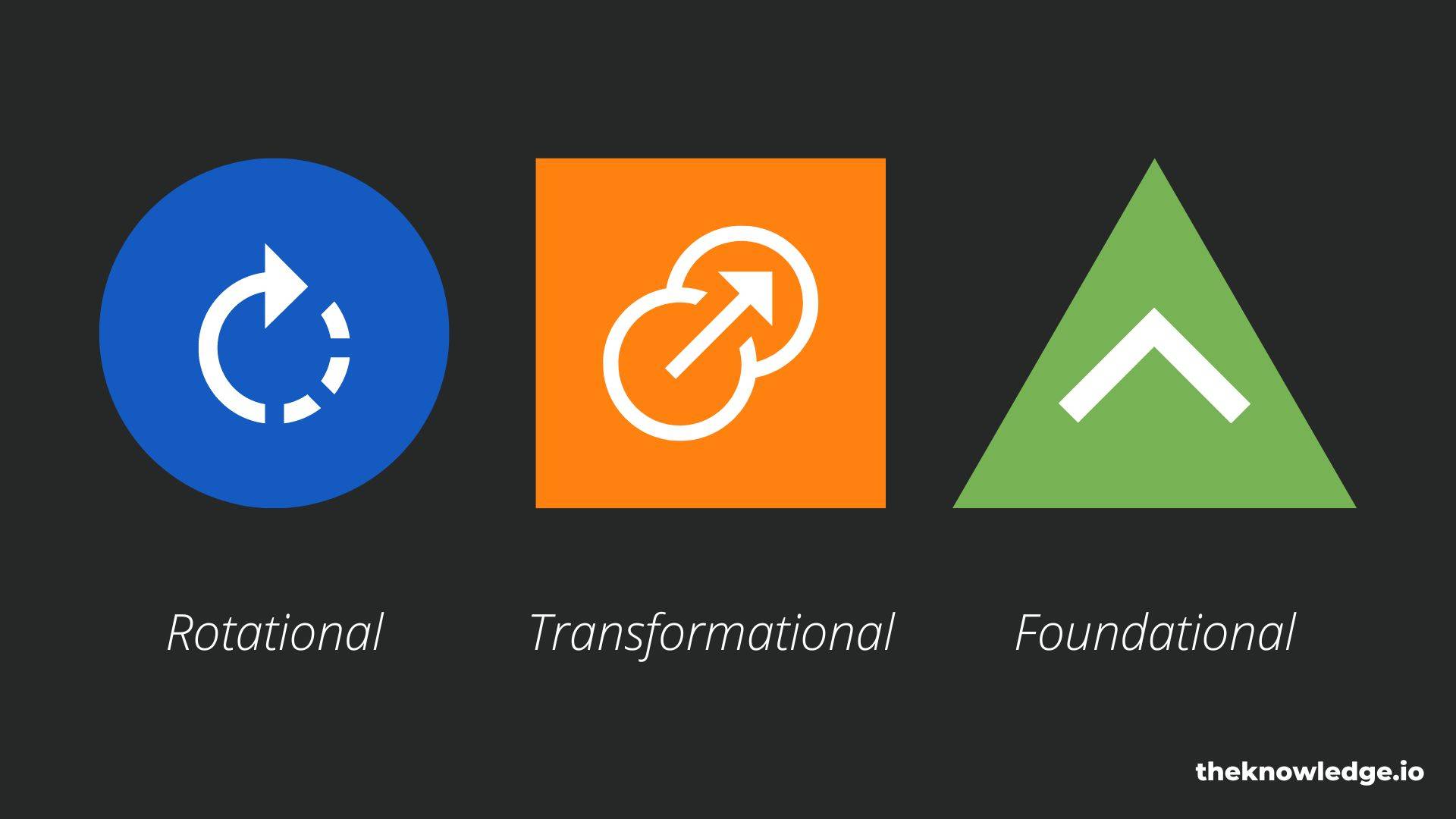
Rotational
A rotational tour is typically 0-4 years.
Rotational tours in a career are like test drives. A chance to explore new roads, feel the terrain, and find what drives you.
These are often intentionally propositioned as training periods, e.g. graduate programmes, but can also be used for match-fit testing e.g. trying out a new role in a different team or industry to see how well adapted it is for you, or for exposure to a specific skill.
These are the typical reasons you would engage in a rotational tour:
- New experience
- Make money
- Gain kudos / industry cache
Transformational
A transformational tour is typically 3-5 years.
In a transformational tour, you are typically spending deep time in a function and driving impact.
Transformational tours are the building blocks of mastery. They sculpt you, challenge you, and help you leave a mark on your industry.
These are the most common tours you will undertake. You might be rolling out an initiative, launching a project, building a team or facilitating some change.
These are the typical reasons you would engage in a transformational tour:
- Skill development
- Relationship building
- To deliver an outcome
Foundational
A foundational tour is typically 5+ years.
When the job aligns perfectly with your values, interests, and skills, it becomes a foundational tour. It's not just work; it's a calling.
You may have a few lateral transitions throughout the business helping to grow different functions. You will also typically launch or oversee multiple projects.
Most executive roles are designed to be foundational roles, but you could embark on one far earlier in a startup / small business.
These are the typical reasons you would engage in a foundational tour:
- Industry leadership
- Innovation within industry
- To deliver an outcome
It's important that going into any role you can clearly identify what kind of tour it is.
This will define how long you might want to stay in a particular role, the way you want to develop and the impact you want to drive.
It will also give you clarity about when those things are not happening and should prompt the right conversations with your boss about how to adjust the role to maximise your development.
If Sandra's next role is her first in a new industry, it should obviously be a rotational one. Something that allows her to test 'match-fit' (how well it aligns with your values, interests or skills) and build skills.
Remember a role doesn't need to say 'rotational' on the tin. It's all about your intentions in approaching it (and ensuring your boss understands your objectives).
Planning your deployments
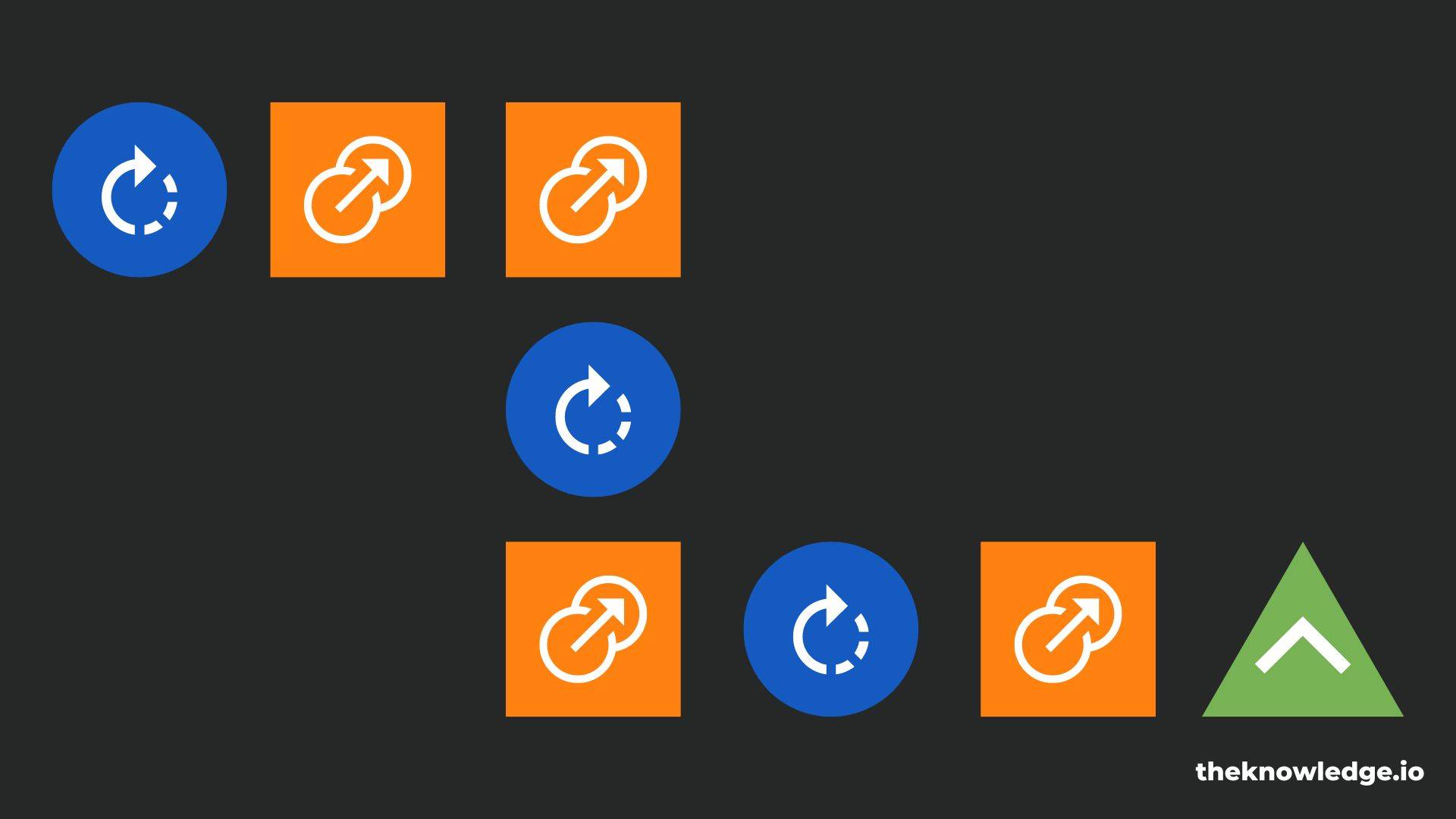 | 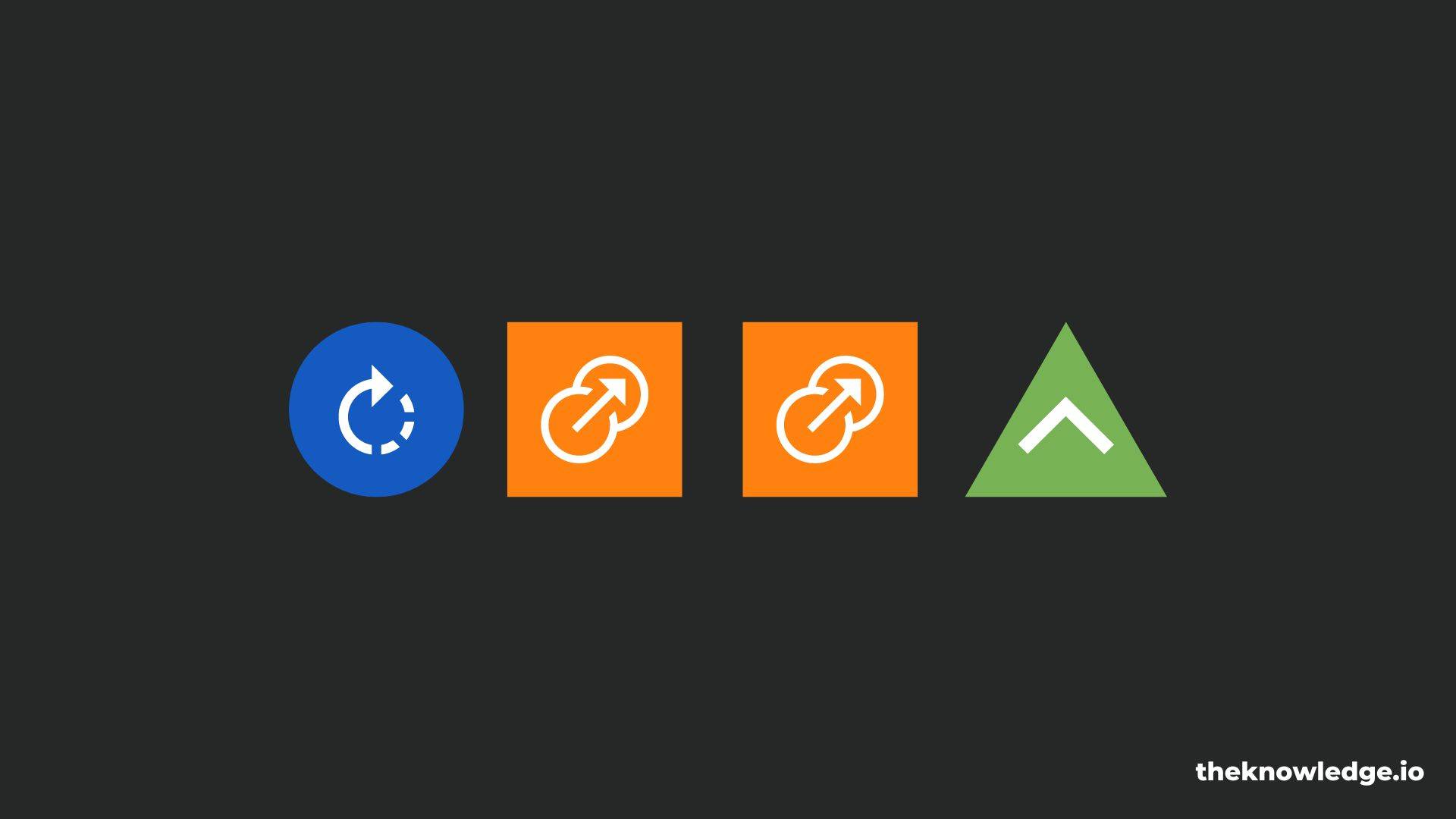 |
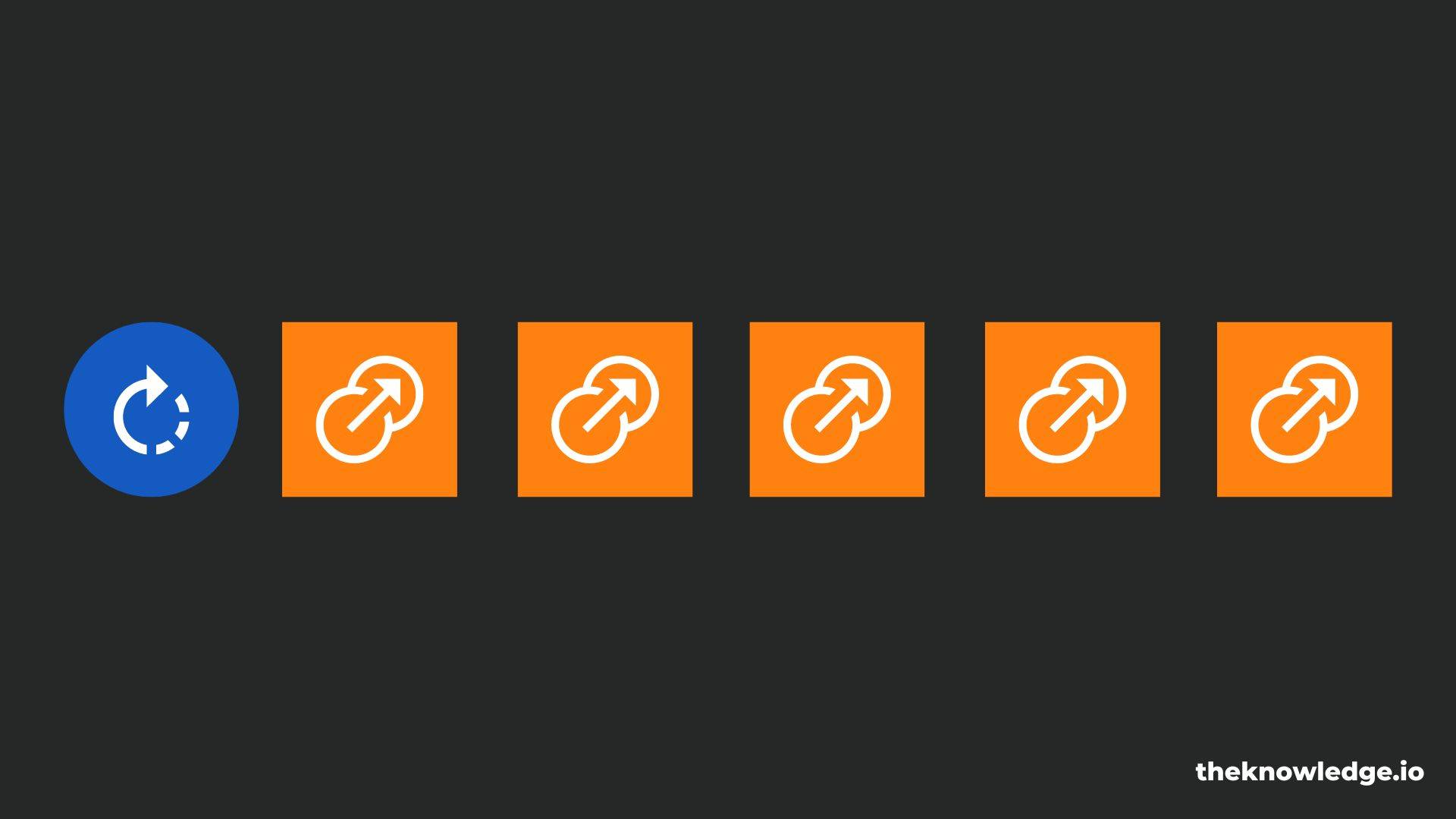 | 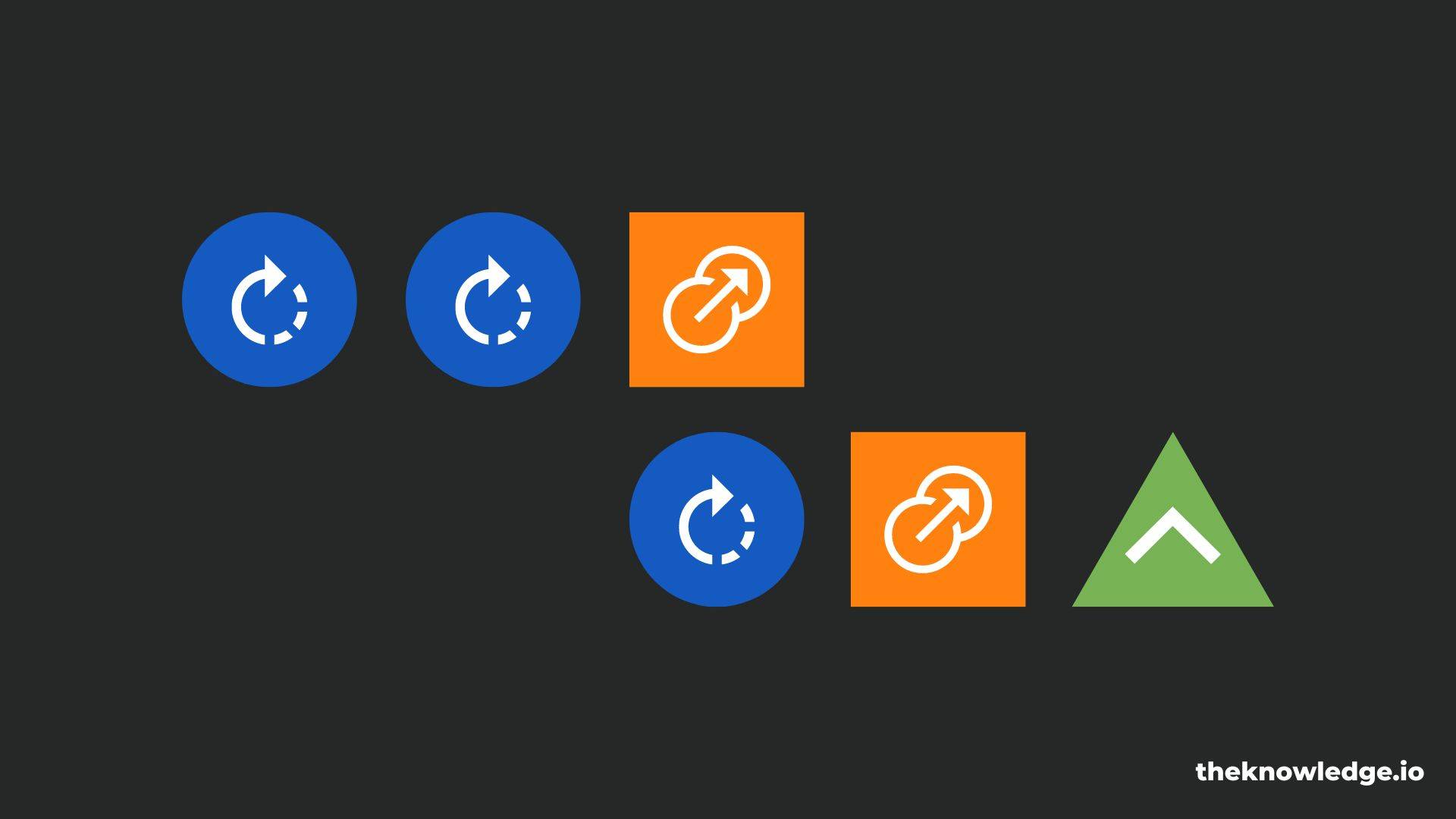 |
Careers can take different shapes. As you plan your first role in this new career Sandra, think about if you'd prefer to spend an extended period finding match-fit, vs building competence that can quickly compound.
That will help you more precisely measure the alignment of different opportunities to your needs, rather than just looking at job titles and role areas.
Typically you'd want to leverage your time in the rotational tour for a transformational or foundational tour at the same company or a new one, but there's also nothing wrong with having back-to-back rotational tours.
For example, at my last company, I came in as their first Chief of Staff. For me was obviously a rotational role. I wanted to get to grips with high-level strategy at a scale-up (Series B 🌿), after spending a while consulting for early-stage startups (Pre-Seed - Seed 🌱).
Knowing that in advance helped me shape my approach to the role, ensuring I got to interface enough with different functions to propose my next tour.
I wanted greater Product exposure, so I took on another rotational tour as the first hire in a new Product Strategy and Operations team (Series C 🌲). And as that team grew, the rotational tour became a transformational one (Series D 🦄) as I took ownership for driving specific long-term projects and outcomes.
I've included the fundraising signposts above to also indicate how the type of role you take on can equally be shaped by your ambitions as by the size and scale of the company.
I also share it to emphasise how often jobs can be completely made up in tech, so focusing on skill development + desired outcomes is likely more useful than job titles long-term.
Treat career-building like a voyage. First, explore, and discover fertile lands (rotational tours), then settle and cultivate (transformational tours), and finally, build your empire (foundational tours).
Step 3: Planning and Execution
➡️ Probabilistic Thinking: Sandra needs to think in terms of probabilities — the chances of different outcomes happening. As she plans and executes, she should be constantly evaluating the likelihood of different scenarios. This will aid her in swiftly adapting to signals and feedback she receives about her decision.
In this final stage, Sandra you'll need to ask herself:
What are the key signals that will show I’ve made the right/wrong decision and how quickly can I adapt to these signals?
Most decisions aren't as final as they seem, and outcomes are rarely binary.
Make feedback your friend by thinking in advance about the signs you might see that will let you know if you're heading in the right direction.
Identifying Waypoints
Here you might want to marry the two frameworks we've just looked at.
When we were backcasting, we were building a roadmap of skill development that would lead to our 'final form'.
What signposts might you see that would tell you that the experience in your role was aligned/misaligned with this long-term trajectory?
Then when we looked at tours of duty, we were thinking specifically about what we would need from our next role.
What signs/feedback might you get that the way the role is unfolding may not meet your current needs?
As a forcing function for tight feedback loops, you could even plan in advance a series of check-ins with yourself at which you can review your list of signposts and see if you're drifting towards or further away from your ultimate destination.
Planning your career isn't about predicting every move. It's about setting clear intentions, and then having the agility to course-correct.
Life Wheel
Personally, I use this life wheel framework for regular check-ins.
I'd recommend doing it monthly to review all areas of your life and develop clear action plans for improving them. Eventually, you can graduate to doing it quarterly or yearly.
Even doing it once will likely have massive benefits, if you continue to review the resulting notes and objectives you set.
You can grab my template, or read these instructions to make your own.
And as mentioned, for more personal stories, ideas and career-related frameworks, check out the Career Craft Manual.
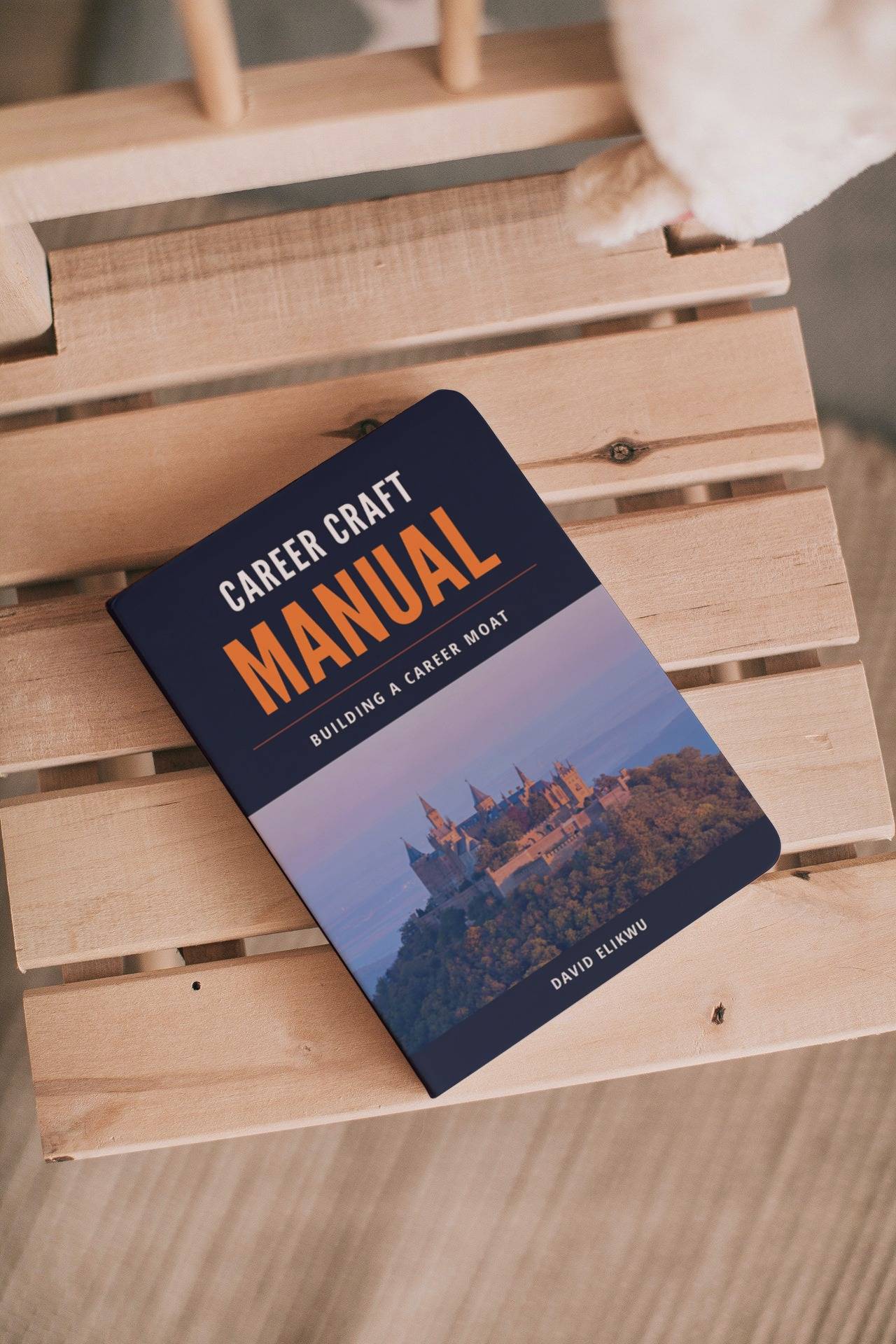
Career Craft Manual
You want to build a great career, but you’re making it up as you go along.
Life doesn’t come with an instruction manual.... Read more
What next?
That's it for this edition of Wayfinder.
I hope our exploration of Sandra's question has sparked some insights for your own decision-making journey.
Have a decision you're wrestling with? Send it my way and it might just feature in a future edition of Wayfinder.
Stay decisive.
P.S. Got any feedback? It's a new series so I'd love to know how I can make this as useful as possible for you - just hit reply.





